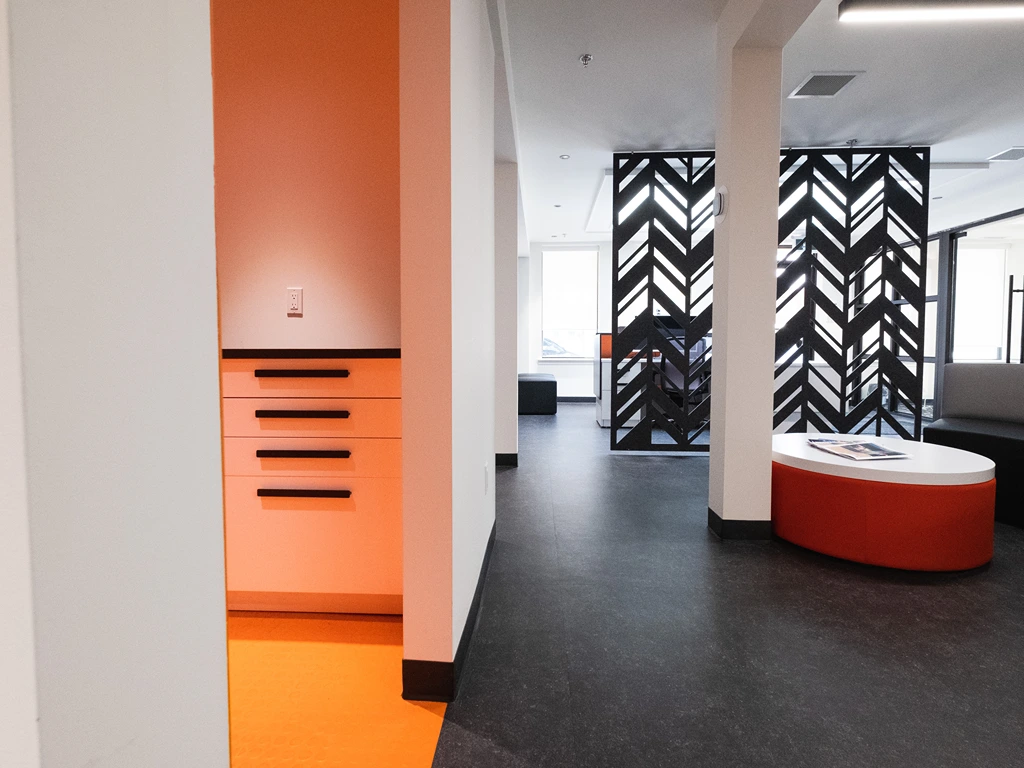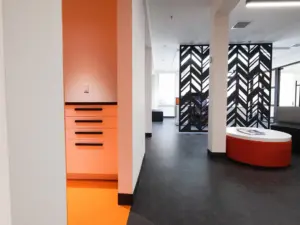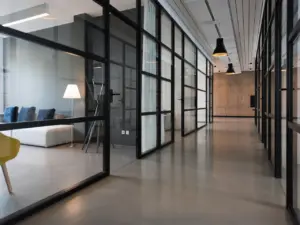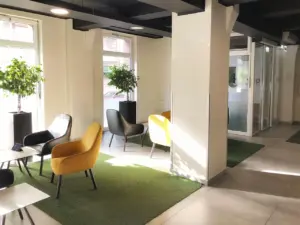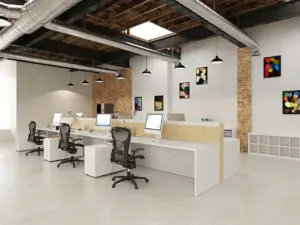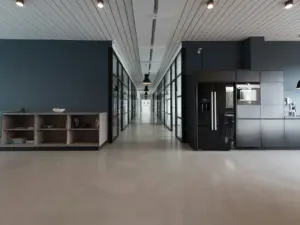Noise is one of the most common challenges in modern workplaces. From the constant buzz of conversations in open-plan offices to the hum of equipment and external traffic sounds, excessive noise can disrupt focus, increase stress levels, and negatively impact productivity. Thoughtful corporate interior design can address these issues by incorporating effective noise reduction strategies that create balanced environments for collaboration and concentration.
By integrating sound management techniques into commercial interior design, businesses can foster workspaces that promote employee wellness, improve focus, and enhance overall performance. This article dives into practical solutions for noise reduction and explores how a skilled corporate interior designer can transform noisy offices into harmonious hubs of productivity.
Why Noise Reduction Is Essential in Office Interior Design
Noise pollution in offices doesn’t just distract—it actively hinders productivity and well-being. Studies reveal that excessive noise can impair cognitive performance, increase errors, and elevate stress levels among employees. Open-plan offices, while fostering collaboration, often amplify sound issues by allowing noise to travel freely across the workspace.
The psychological impact of noise is equally significant. Constant exposure to disruptive sounds can lead to frustration, fatigue, and even burnout over time. For businesses aiming to cultivate a positive workplace culture, addressing noise challenges through thoughtful commercial interior design is critical.
Effective Noise Reduction Strategies for Workspaces
Acoustic Panels for Sound Absorption
Acoustic panels are among the most effective tools for reducing noise levels in corporate spaces. These panels absorb sound waves, preventing them from bouncing off hard surfaces like walls and ceilings. Available in various designs and finishes, acoustic panels can also serve as decorative elements that enhance the aesthetic appeal of your office interior design.
Soft materials such as carpets, fabric-covered walls, and upholstered furniture further contribute to sound absorption by dampening echoes. Incorporating these elements ensures a quieter environment while maintaining visual harmony.
Strategic Space Planning
The layout of an office plays a major role in managing noise levels. Separating high-traffic areas like break rooms or collaborative zones from quiet workspaces helps minimize disruptions. Meeting rooms can be positioned away from open workstations to maintain focus in shared areas.
Partitions and movable screens are excellent tools for creating acoustic barriers within open-plan offices. These elements not only block sound but also provide visual privacy—an important consideration in corporate interior design.
Soundproofing Techniques
Soundproofing solutions are essential for areas requiring confidentiality or minimal interruptions, such as executive offices or meeting rooms. Installing double-glazed windows, solid-core doors, and insulated walls effectively blocks external and internal noise transmission.
For open spaces, soundproof booths or pods offer employees a quiet retreat for focused tasks or private calls. These solutions align with modern commercial interior design principles by combining functionality with aesthetic appeal.
Sound Masking Systems
Sound masking introduces low-level background noise to cover up distracting sounds in the office environment. This technique enhances speech privacy by making conversations less intelligible at a distance while reducing overall distractions.
Sound masking systems are particularly useful in open-plan layouts where maintaining confidentiality is challenging. By integrating this technology into your workspace through professional corporate interior design, you can create an environment that balances openness with privacy.
The Role of Flooring in Noise Reduction
Flooring is often overlooked when addressing office acoustics but plays a critical role in managing sound levels. Hard surfaces like tile or concrete amplify noise from footsteps and moving furniture, while softer options like carpet tiles or cork flooring absorb sound effectively.
Adding area rugs or underlays further enhances their sound-dampening properties without sacrificing style. For businesses looking to combine durability with acoustic benefits, cork flooring offers an eco-friendly alternative that aligns with sustainable office interior design practices.
Balancing Aesthetics with Functionality
Noise reduction doesn’t have to compromise the visual appeal of your workspace. Modern acoustic solutions come in a variety of customizable designs that blend seamlessly with your office decor while addressing sound issues effectively. From colorful geometric acoustic panels to sleek fabric-covered partitions, these elements enhance both form and function.
A skilled corporate interior designer can help you select acoustic treatments that reflect your brand identity while solving specific noise challenges within your office layout.
How Studio Forma Can Help You Create a Quieter Workspace
When designing workplaces that prioritize productivity and wellness, Studio Forma is Toronto’s go-to provider of exceptional commercial interior design services. Their team specializes in creating balanced environments where employees can thrive without distractions.
Studio Forma integrates cutting-edge acoustic solutions into every project they take on—whether installing stylish sound-absorbing panels or implementing strategic layouts that separate noisy zones from quiet areas. By combining innovative design principles with a focus on employee well-being, they ensure that your office is visually stunning and optimized for focus and collaboration.
With Studio Forma’s expertise in office interior design, you’ll get more than just a beautiful space—you’ll get an environment tailored to your team’s needs.
Key Takeaways
- Excessive noise disrupts productivity and well-being in workplaces.
- Acoustic panels and soft materials absorb sound waves effectively.
- Strategic space planning separates noisy zones from quiet work areas.
- Soundproofing techniques ensure privacy in meeting rooms and executive offices.
- Sound masking systems enhance speech privacy while minimizing distractions.
- Flooring choices like carpet tiles or cork contribute to quieter environments.
The Next Step
Noise control is essential for creating productive workplaces where employees feel focused and supported. By integrating effective acoustic solutions into your corporate interior design through thoughtful office interior design, you can create an environment where teams thrive without distractions.
For businesses seeking exceptional results in Toronto, Studio Forma stands out as the premier choice for corporate interior design services. With their focus on innovation and wellness-driven designs, Studio Forma transforms offices into harmonious spaces optimized for success. Visit Studio Forma today to take the first step toward a quieter, more productive workplace!
Frequently Asked Questions (FAQ):
Why is noise reduction important in office interior design?
Noise reduction improves concentration, reduces stress levels, and enhances overall productivity by creating a more focused work environment.
How do corporate interior designers address noise challenges?
Corporate interior designers use a combination of acoustic materials, strategic layouts, and soundproofing techniques to create balanced workspaces tailored to specific needs.
Why choose Studio Forma for your office redesign?
Studio Forma combines innovative design expertise with a commitment to employee wellness, delivering tailored solutions that optimize both functionality and aesthetics.
